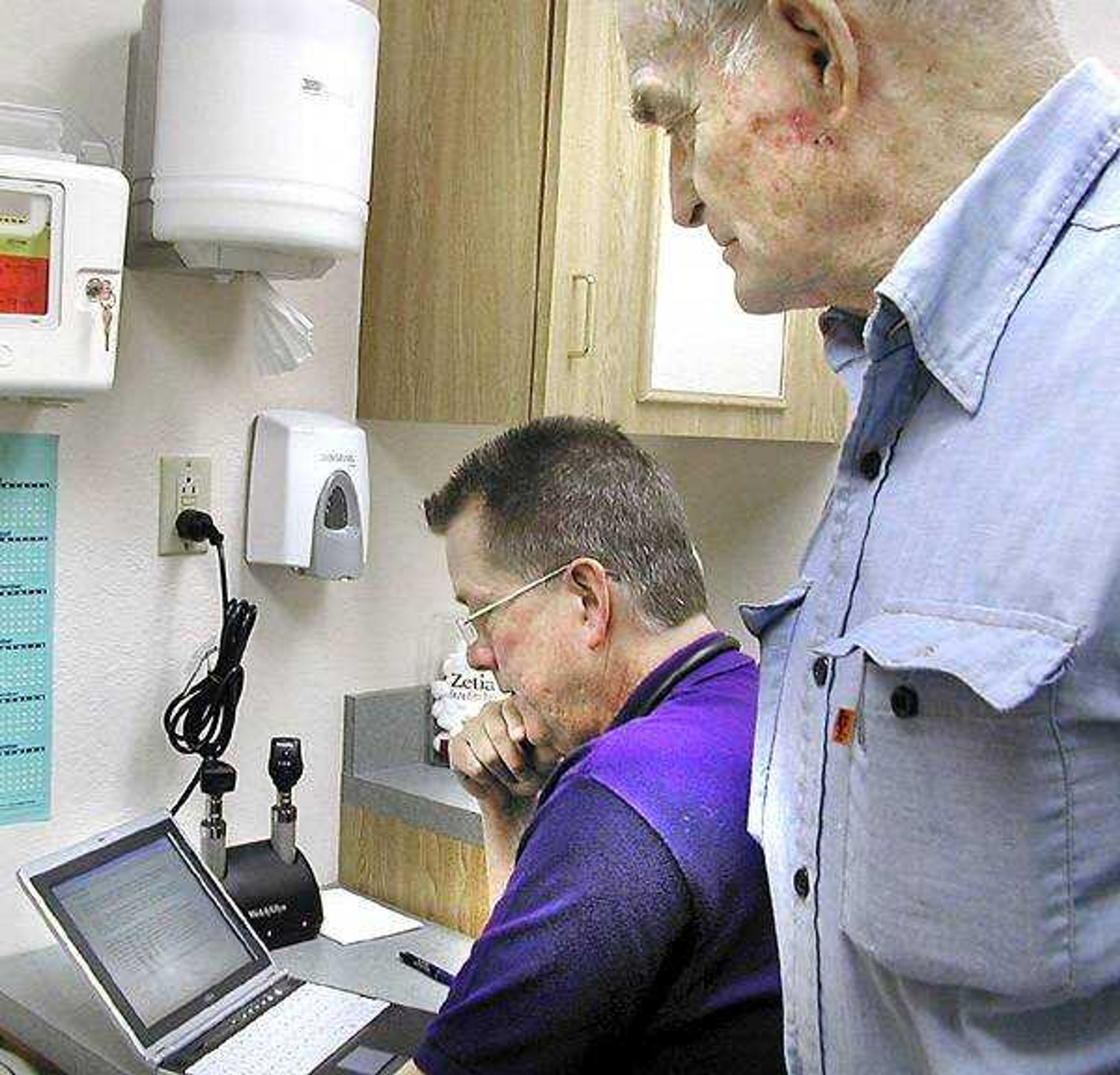Doctors eliminate paper trail with new technology
It used to be that a patient got an X-ray and several specialists needed copies of the image for their files, which took time and money on the part of radiologists as well as storage space in hospitals and offices. But now, with digital imaging, medical facilities can share the same image simply by viewing it on a computer. Patients won't see any difference in their care, but doctors can work more efficiently...
It used to be that a patient got an X-ray and several specialists needed copies of the image for their files, which took time and money on the part of radiologists as well as storage space in hospitals and offices.
But now, with digital imaging, medical facilities can share the same image simply by viewing it on a computer. Patients won't see any difference in their care, but doctors can work more efficiently.
"That image or information can be seen by anyone who has the authority at any time at any place in the world," said Tom Welch, radiology director at Southeast Missouri Hospital.
Like many hospitals and doctors offices around the country, both Cape Girardeau facilities are working toward an era without paper. It's a goal that's being instituted in stages.
Southeast Missouri Hospital and Saint Francis Medical Center both spent months studying computer systems and information technology before deciding to implement a paperless storage system that integrates X-rays and film images with patient files.
"It took a long time to get to that point," Welch said.
Part of the hesitation was simply waiting for the technology to become cost efficient, he said. Once the technology moved to a Web-based system, it became less expensive and more easily usable for hospitals.
Today, using cable modems and DSL, doctors can view X-rays, MRIs or other film images from their office or home if they choose.
Dr. Dan Bieser of the Mount Auburn Medical Group uses a paperless system at his practice. Patients records are stored in computer files that can be accessed by the nurses and the doctor.
Notes are recorded during the office visit and test results sent by fax can be seen on a small portable computer. It saves time because doctors don't have to go flipping through a chart of paper, Bieser said.
But some doctors and hospital staff weren't as keen on the idea of a paperless system in the beginning. "We were weaning physicians and providers off what they've been doing," said Pat Bira, vice president at Southeast Missouri Hospital.
Now doctors coming out of medical school or from teaching facilities wouldn't blink if you told them there wasn't anything but computer technology, Welch said.
Dr. Mark Pfautzch, a radiologist with Cape Radiology Group, said people have this idea that a radiologist sits in a dark room and looks at X-rays all day. "But that's like what you'd see in a museum," he said.
The newest technology, digital mammography, allows doctors to see their patients films quickly, pass them on to consultants and enter them into databases for studies.
Film images are still a valid way to do mammography, Pfautzch said. The benefit of digital imaging "is that you don't need to store as much and it cuts down on lost film."
At Saint Francis Medical Center's Family Birthplace, doctors can monitor a patient's labor from their home or office. The computerized system provides the doctors with specific information about contractions, fetal heart tracing and maternal vital signs.
Until the hospital installed the fetal monitoring system, this information would only have been available at a patient's bedside. "We use it if we're unsure of what we're seeing and aren't there to read the monitor," said Dr. Ann Uhls, an obstetrician at Saint Francis' Family Birthplace.
Most of the time patients don't even realize that the doctor can check their status from a remote site. "It helps us to be more prepared" for seeing the patients, Uhls said.
Connect with the Southeast Missourian Newsroom:
For corrections to this story or other insights for the editor, click here. To submit a letter to the editor, click here. To learn about the Southeast Missourian’s AI Policy, click here.








